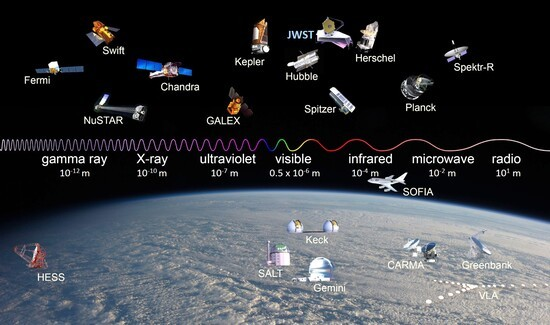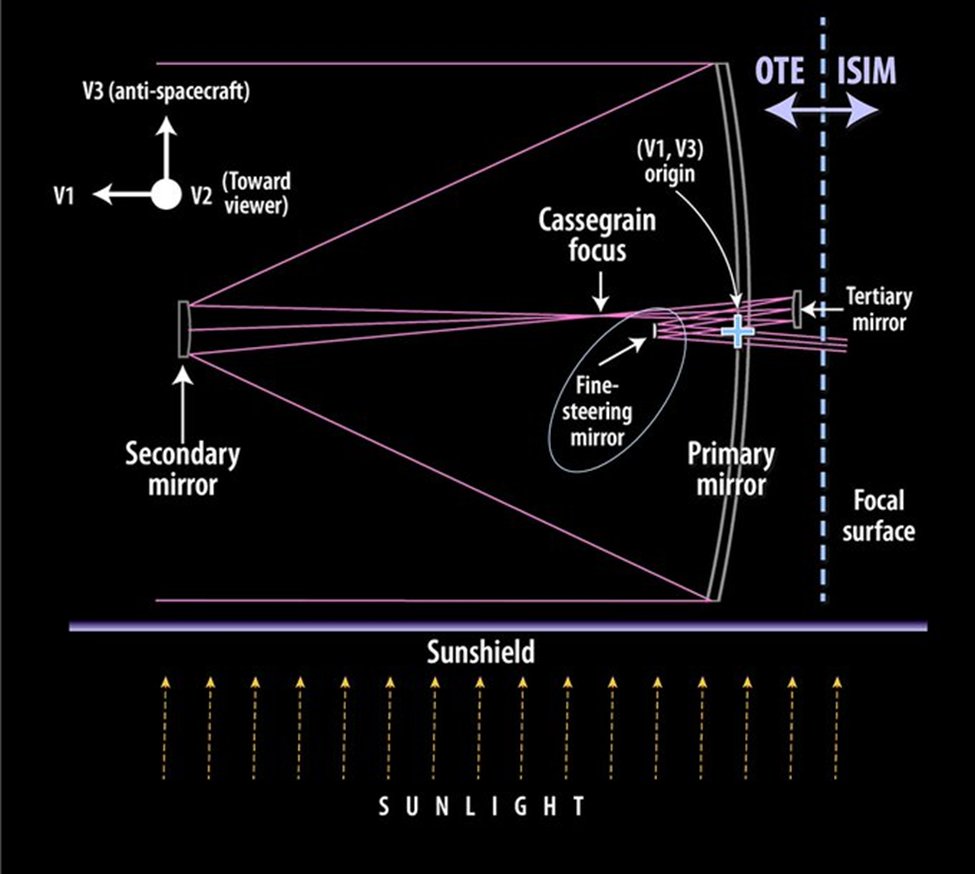
Where does #JWST reside on the spectrum of telescopes? The EM spectrum ranges for various space-based telescopes and a few ground telescopes are shown below. JWST observes in the 0.6–28.3 μm wavelength range (orange to mid-infrared). Hubble ST observes in the 0.1–1.0 μm range. 

The Herschel Space Observatory, active from 2009 to 2013, observed in the far IR 55-672 µm range, from its perch at L2 (same as #JWST!). Its 3.5 m mirror was made of sintered silicon carbide. Detectors were kept at temps below 2 deg K, using 2,300 litres of liquid helium at 1.4 K 

The Spitzer Space Telescope, 2003-2020, observed in the infrared 3.6-160 µm range from an Earth-trailing orbit. Its 0.85 m Beryllium mirror and detectors were kept at near zero temps using liquid helium. The LHE depleted in 2009, limiting Spitzer to shorter wavelengths. 

Sources for above tweets #JWST #HST #Herschel #Spitzer -
imagine.gsfc.nasa.gov/Images/science…
en.wikipedia.org/wiki/James_Web…
en.wikipedia.org/wiki/Hubble_Sp…
en.wikipedia.org/wiki/Herschel_…
en.wikipedia.org/wiki/Spitzer_S…
imagine.gsfc.nasa.gov/Images/science…
en.wikipedia.org/wiki/James_Web…
en.wikipedia.org/wiki/Hubble_Sp…
en.wikipedia.org/wiki/Herschel_…
en.wikipedia.org/wiki/Spitzer_S…
Fun fact - JWST's secondary mirror at 0.74 m is almost as large as Spitzer's primary mirror at 0.85 m. But, #JWST mirror temp of 50 K cannot match the 5.5 K temp of Spitzer's mirrors, since it uses passive cooling, not liquid He. That is likely why spectrum coverage is different.
• • •
Missing some Tweet in this thread? You can try to
force a refresh









